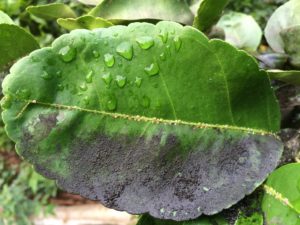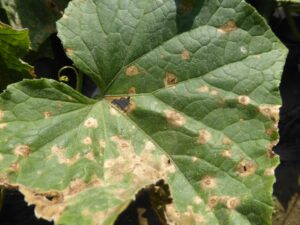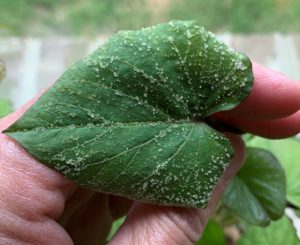Nightshades like tomatoes and peppers are susceptible to a fungal disease called Septoria leaf spot. Potatoes, also members of the nightshade family, are also prime targets for this harmful pathogen. In this article, you will learn how to identify this disease, as well as how to treat it and, more importantly, how you can prevent it from occurring in the first place.
What is Septoria Leaf Spot?
Septoria leaf spot, also known as Septoria blight, is a common fungus caused by the pathogen Septoria lycopersici. High humidity, wet plants (from either rain or irrigation), and temperatures ranging from 68 to 77°F (20 to 25°C) create the perfect environment for the spores to proliferate.
To begin, an infection appears as small, brown spots called lesions, on the lower leaves of the plant. The lesions measure approximately 1/8 inch to 1/4 inch in diameter. In time, the lesions will develop yellow halos and tan to white centers. Spores will soon spread to infect the upper leaves as well. Plant stems and flowers may also be affected but, generally speaking, fruit will not unless the infection is severe.
Do not be surprised if the lesions merge to create larger spots and, ultimately, cause the leaf to yellow, die, and fall off. Given time, the infection may take over the entire plant, killing it as well.
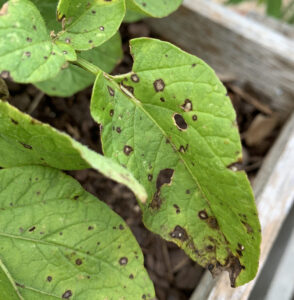
How Septoria Leaf Spot Spreads
Fungal spores can be transmitted by garden tools, gloves, and anything that comes into contact with the pathogen. Water that splashes spores in infected soil onto plant tissue is another common mode of transmission. Spores can also be transmitted by the wind.
Be aware that the pathogen can overwinter on solanaceous weeds, plant tissue, and infected seeds.
This article contains affiliate links. If you make a purchase using one of these links, I will receive a very small commission at no additional cost to you, and it will help me maintain this website. Rest assured, I only recommend products I actually like!
How to Treat an Infection
The best way treatment for Septoria leaf spot infection is three-fold.
1. Remove infected leaves. Be sure to throw the leaves in the trash and do not compost them as most compost piles do not maintain high enough temperatures to kill pathogens. Also, disinfect garden tools and other items that come into contact with infected plant tissue.
2. Use an anti-fungal agent. Although fungicides, like neem oil, will not eradicate an infection, they can help control the spread of Septoria leaf spot. Be sure to use cold pressed neem oil with the naturally occurring ingredient called azadirachtin as this is more effective. This is the brand that I use. You can learn more about neem oil and its uses in this helpful article.
3. Water carefully. Careful watering can help mitigate the spread of the pathogen. Water with a gentle spray from the bottom of the plant, being careful not to splash water onto leaves. You can also add a layer of mulch to reduce the need for water and keep spores that are present in the spoil from infecting plant tissue.
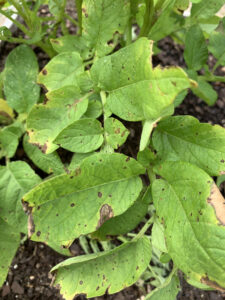
How to Prevent an Infection
1. Properaly space plants. Generally speaking, potato plants do not require pruning. You can, however, make sure they are planted with adequate spacing inbetween plants to allow for ventilation, which will allow leaves to dry quicker when they become wet. If you see an infection developing, then by all means, prune infected leaves and discard.
2. Practice Good Garden Hygiene. Remove weeds and plant debris from the garden and surrounding area so as to remove places for spores to hide and overwinter. Clean all garden tools and equipment after each trip to the garden. You can learn more here.
3. Plant only disease-free seed potatoes.
4. Rotate Crops every three years, which means you should not plant any member of the nightshade family in the same area for a period of three years.
5. Water Carefully. If possible, use a drip irrigation system or soaker hose so as to minimize water splashing.
Septoria leaf spot is a type of blight that can devastate a potato crop. While it is important to do what you can to prevent an infection, it may occur nonetheless. Take heart, however, if caught and treated early, you can slow the pathogen’s spread and still enjoy a harvest.
Thank you for reading this article! If you found it helpful, please consider sharing it with others via email and social media!

